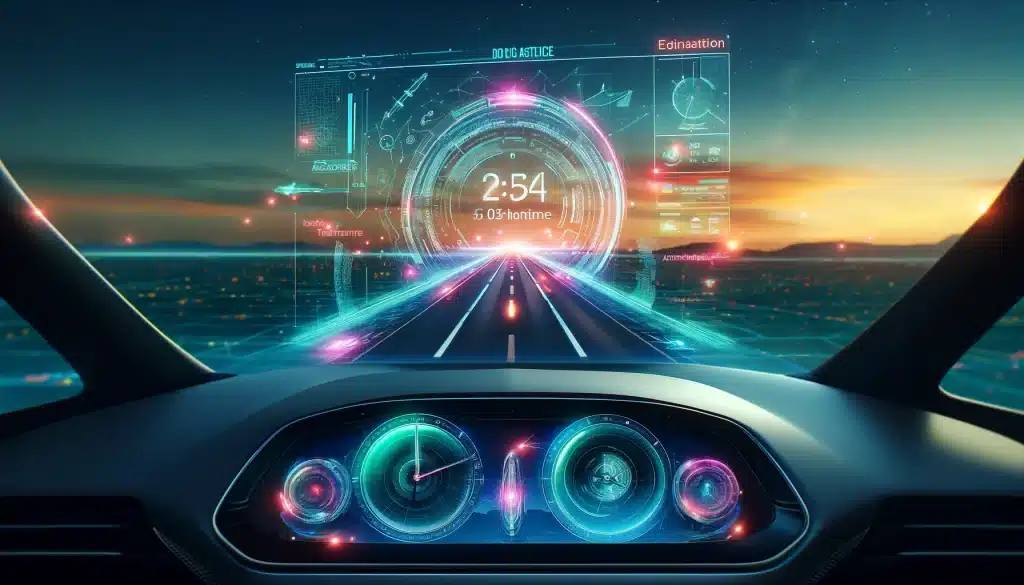
Estimated Time of Arrival: Understanding ETA in Navigation Apps
Estimated Time of Arrival (ETA) is a crucial feature in modern navigation apps. ETA predicts the time a traveler will arrive at their destination based on real-time data and various factors. This seemingly simple feature plays a pivotal role in trip planning, coordination, and adapting to dynamic road conditions.
What is the Estimated Time of Arrival?
Estimated Time of Arrival (ETA), is a key metric in navigation apps that predicts the time a traveler will reach their destination. This estimation is not static but dynamically calculated based on various real-time factors. Whether you’re driving, biking, walking, or using public transport, the ETA adapts to provide the most accurate prediction possible.
How Does ETA Work in Navigation Apps?
Understanding the mechanics behind ETA can provide insights into how navigation apps make their predictions. Here’s a breakdown of the core components:
Route Distance
The first step in calculating ETA is determining the total distance of the selected route. Navigation apps use mapping algorithms to measure the precise distance between your starting point and destination.
Current Speed Limits
Speed limits along the route play a critical role. The app considers these limits to estimate how long it will take to traverse each segment of the journey.
Traffic Data
One of the most dynamic aspects of ETA calculations is the integration of real-time traffic data. Congestion, accidents, and road closures can significantly impact travel time. Apps like Google Maps excel in providing up-to-date traffic conditions to adjust ETA accordingly.
Mode of Transport
Your mode of transport greatly influences the ETA. For instance, walking or biking speeds differ from driving, and public transport adds another layer of complexity due to schedules and stops.
5. Stops and Delays
Navigation apps are increasingly intelligent, adjusting the ETA dynamically when users make stops or encounter unexpected delays. For example, if you pause at a rest area or take a detour, the app recalculates your arrival time.
Why is ETA Important?
ETA is more than just a number on your screen—it serves several practical purposes that make it invaluable for travelers and commuters.
Trip Planning
The Estimated Time of Arrival helps users manage their time effectively. Knowing when you’ll arrive allows for better scheduling of meetings, appointments, or social gatherings.
Navigation Adjustments
Unexpected delays can disrupt even the best-laid plans. Navigation apps use real-time data to alert users about potential holdups, offering alternative routes to minimize delays and keep the ETA as accurate as possible.
Coordination
ETA is crucial for communication and coordination, especially in group settings. For example, sharing your ETA with friends, family, or colleagues ensures everyone stays informed about your arrival time, fostering better planning and punctuality.
Popular Navigation Apps and Their ETA Features
Several navigation apps stand out for their ability to provide accurate ETAs. Among them, Google Maps, MapMetrics, and Apple Maps are noteworthy:
Google Maps
Renowned for its accuracy, Google Maps continuously updates ETA based on real-time traffic data and other variables. It also offers detailed insights into alternate routes, helping users avoid delays and plan efficiently.
MapMetrics
MapMetrics takes a unique approach by leveraging blockchain technology to enhance data privacy and accuracy. It uses data-driven algorithms to calculate arrival times, making it a promising option for those seeking reliable navigation tools.
Apple Maps
Apple Maps integrates seamlessly with iOS devices, providing reliable ETA predictions tailored to Apple users. Its intuitive interface and frequent updates make it a dependable choice for navigation.
The Evolution of ETA in Navigation

The concept of Estimated Time of Arrival has evolved significantly over the years. Early GPS systems provided basic time predictions based solely on route distance and average speeds. Modern navigation apps integrate advanced technologies such as artificial intelligence, machine learning, and predictive analytics to refine ETA calculations.
For example, some apps analyze historical traffic patterns to predict congestion during peak hours, while others use machine learning to understand user behavior and preferences. These advancements have made ETA calculations more accurate and reliable than ever before.
How Accurate is ETA?
While navigation apps strive to provide precise ETAs, certain variables can still affect accuracy. Unforeseen events such as sudden road closures, extreme weather, or accidents can disrupt even the most advanced systems. However, continuous updates and real-time adjustments ensure that users receive the closest possible estimate under prevailing conditions.
Tips for Maximizing ETA Accuracy
To make the most of your Estimated Time of Arrival predictions, consider the following tips:
Enable Location Services
Allowing the app to access your real-time location ensures accurate tracking and updates.
Keep the App Updated
Regular updates ensure you benefit from the latest algorithm improvements and features.
Follow App Recommendations
Pay attention to suggested routes and alerts for the most efficient journey.
Plan for Stops
Inputting planned stops into the app can help maintain an accurate ETA.
Conclusion
The Estimated Time of Arrival (ETA) is a powerful feature that enhances the navigation experience. It allows travelers to plan their trips, adapt to changing conditions, and coordinate effectively. As navigation technologies continue to evolve, ETA will only become more precise, ensuring that users reach their destinations with confidence and ease.
By understanding the factors influencing ETA and using navigation apps wisely, you can make the most of this essential tool, transforming how you travel. Whether you’re a daily commuter or an occasional road tripper, ETA is your reliable companion for efficient and informed journeys.


